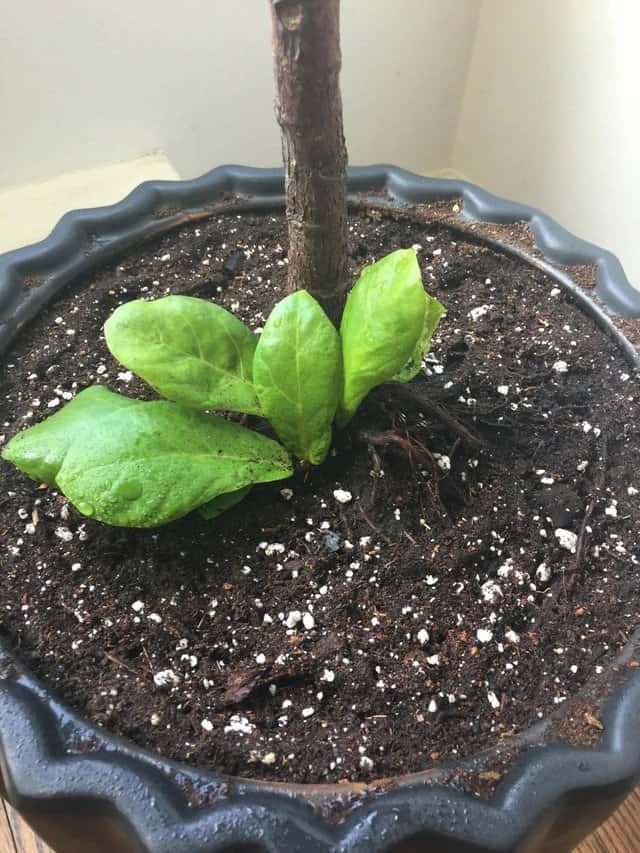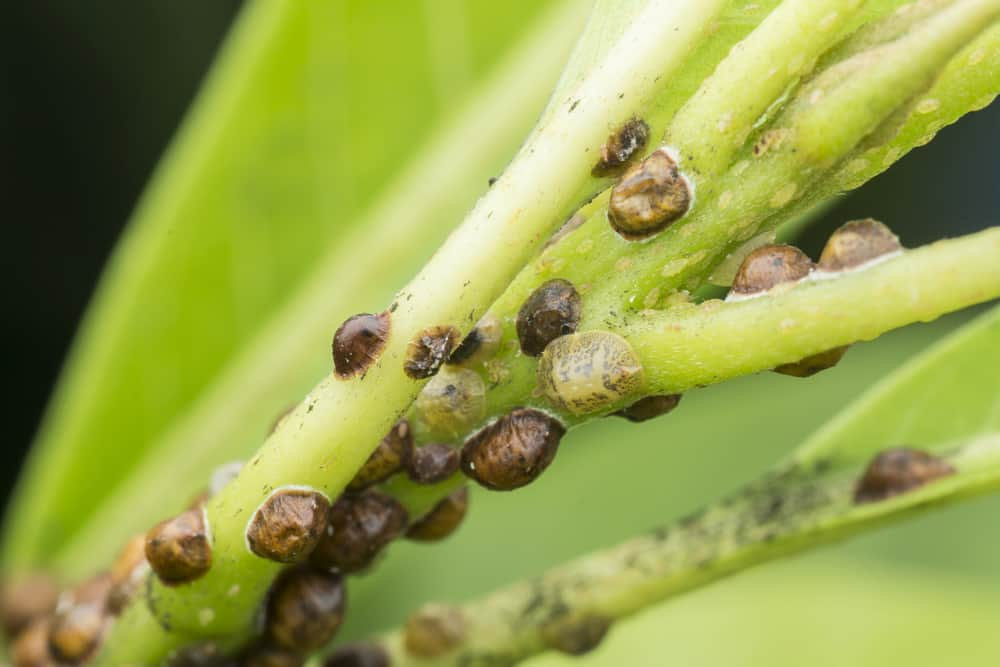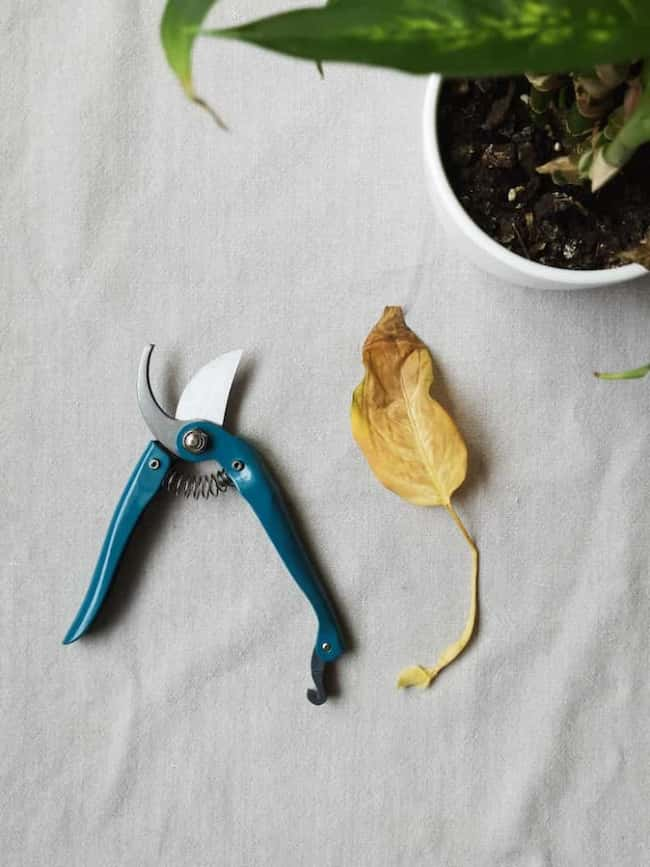It’s only natural to be concerned when your fiddle leaf fig is growing leaves at bottom.
These leaves are called “suckers” and they most commonly appear when the plant is stressed.
(Keep in mind that the suckers appear near the base of the tree, and are not the lower leaves that gardeners often remove to make the plant have a more tree-like appearance.)
That said, this is quite a common issue and, as you’ll see, there are a few things you can do to deal with bottom leaves on a fiddle leaf fig plant.

Table of Contents
Why is my fiddle leaf fig growing leaves at the bottom?
When the fiddle leaf fig is growing leaves at the bottom, it is typically a sign that something is wrong with the plant. Knowing the exact cause of the problem is the first step in helping your fig tree survive and thrive in the coming years.
1. Stress
Stress is the most common cause of leaves forming at the bottom of a fiddle leaf fig tree. When the plant is stressed, it naturally puts out new growth. Stress can be caused from an infestation, disease, or various other issues, such as improper care.
One of the best ways to prevent stress is to ensure your fiddle leaf fig gets the right amount of water, sunlight, temperature, and humidity. Making sure the plant has the ideal growing environment will help keep it healthy and happy.
2. Pest infestation
It is not uncommon for the fiddle leaf fig to grow leaves at the bottom of the tree when it is being attacked by insects. If this is the case, you must first treat the pests first. Once you have the pest infestation under control, you can simply remove the suckers.

If you do find pests attacking the fiddle leaf fig, treat the plant with insecticidal soap. Insecticidal soap is a safer alternative to chemically-filled pesticides and can successfully get rid of sap-sucking insects that attack the fig.
When applying the insecticidal soap, follow the instructions on the bottle and make sure to liberally spray both the top-side and under-side of the foliage.
3. Damaged roots
When the fiddle leaf fig has root damage, it can send out suckers to help promote new growth on the plant. This is often seen after the tree has been repotted or the roots were pruned. The good news is that you can remove the suckers by pruning them off the base of the tree.
Unless the root damage was extensive, there is no need to worry about your fiddle leaf fig. It is not uncommon for some roots to become injured when repotting your fiddle leaf fig.
Damaged or severed roots will grow back, but the amount of nutrients and water that the plant can absorb will be restricted until that time. For this reason, make sure you keep an eye on your fiddle leaf fig to give it time to recuperate while ensuring that it’s still getting what it needs to survive. While it may not necessarily thrive during this period, it should recover, given a bit of time.
4. Injury
When the fiddle leaf fig is injured, it will naturally start to produce new growth to help replace the injured portions of the plant.
Sometimes gardeners purposely injure fiddle leaf figs in order to trigger these suckers. An instance of this would be pinching or notching a fiddle leaf fig to encourage growth. When these suckers appear on their own, however, that is when there is an issue that you should investigate.
What should I do with the bottom leaves of a fiddle leaf fig plant?
If you notice your fiddle leaf fig is growing leaves at the bottom, you should give your plant a thorough check up. Look for any problems that could cause the suckers to form. Pests, such as spider mites, mealybugs, and scales, are just a few of the insects that can attack fiddle leaf figs.
Once you have figured out the cause of the suckers, you can either leave them be or remove them. Leaving the suckers in place will cause your fiddle leaf fig to appear bushier and less like a tree. If, however, you want to maintain a tree-like appearance, it’s best to remove the bottom leaves.

To remove the suckers, simply prune them off with a pair of sharp pruning shears. Make sure the pruning shears are sanitized before and after each use to prevent the potential spread of pests and diseases.
Find out more: How to Prune a Fiddle Leaf Fig: The Ultimate Guide
Should I take the bottom leaves off my fiddle leaf fig?
Whether or not to take off the bottom leaves of the fiddle leaf fig will depend on how you want the plant to look. Leaving the suckers at the bottom won’t cause any issues with the plant, but will make it look more like a bush.
If you remove the leaves, the plant will have a trunk that is bare towards the bottom, making it look like a tree. And given that this is often the look that people go for with this particular plant, then this could be enough for you to consider the problem solved!
At the same time, since this is merely a personal preference, there is no hard or fast rule as to whether or not to remove the leaves once you notice your fiddle leaf fig has new growth at its base.
What is important, however, is that you find out what caused the suckers to grow in the first place. Suckers are a sign that something is up with your plant, and this “something” could range from nothing more than an annoyance to a serious concern.
